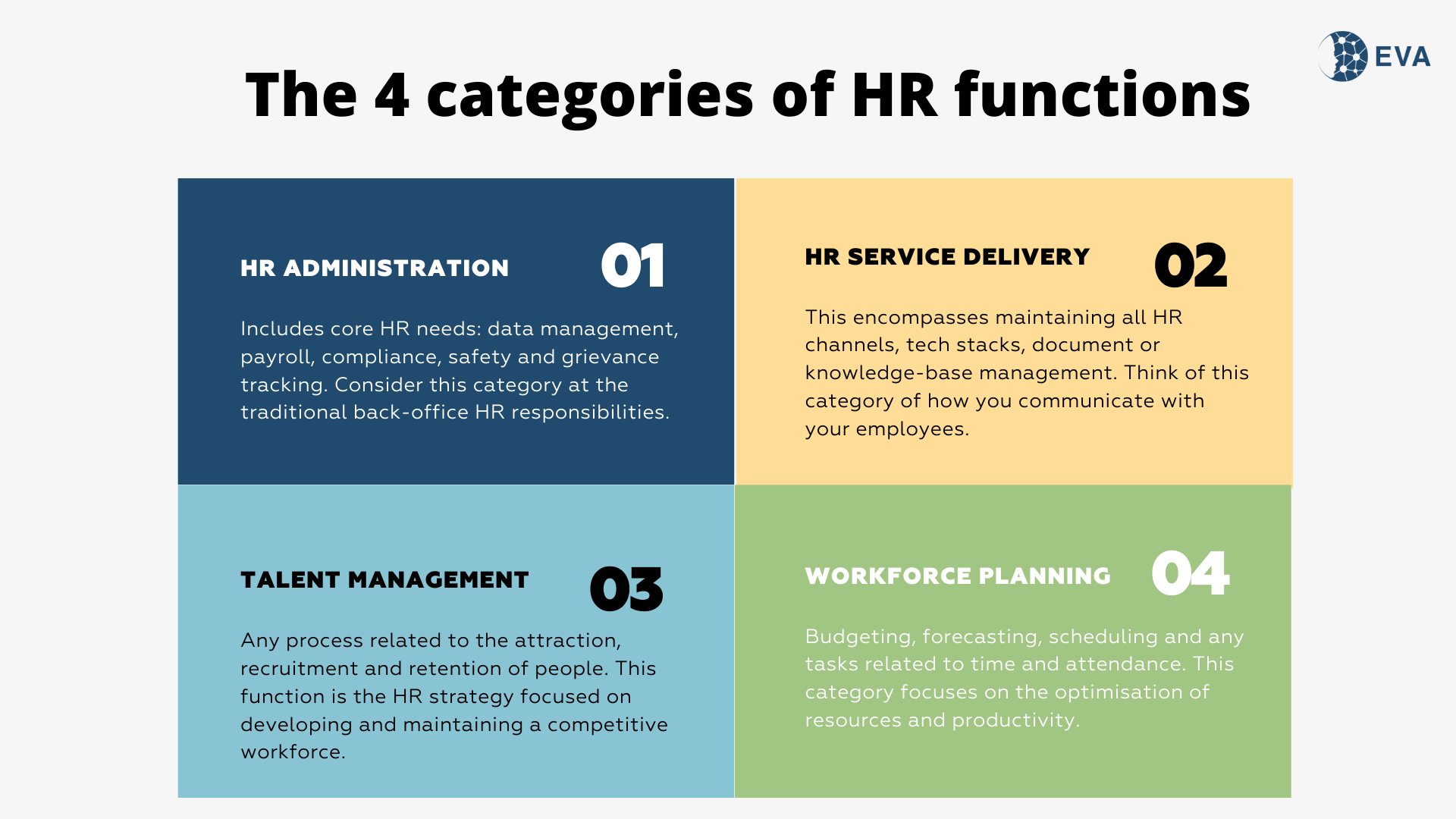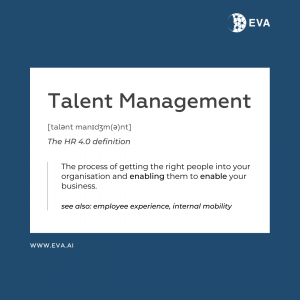Talent management is the strategic and consistent process of attracting, onboarding and retaining high-quality employees, by motivating them to improve their organisational performance and impact.
The primary purpose of talent management is to build and maintain a highly-motivated workforce that drives business growth.
How is Talent Management different from HR?
There are misconceptions that talent management is an alternative strategy for HR. However, talent management and HR are not two different approaches to the same goal, and you can’t pick one over the other; Every organisation has to do both.
Talent management is just one increasingly important HR functional category alongside three others: HR administration, HR service delivery, and workforce management.
Here is a breakdown of what each of these functions and the responsibilities that they entail:

The Talent Management Lifecycle
The entire talent management works in an always-on loop, across six main functions:
- Identifying talent gaps and vacant positions within your organisation
- Sourcing talent and hiring the right people to fill skill gaps
- Onboarding suitable candidates and
- Engraining your business culture amongst your employees
- Continuous development of their skills and training for expertise with a future focus
- Engaging and driving experiences that enable employees to achieve long-term business goals.
When you think about all the aspects of people management that Talent management considers, you realise its primary function is to to ensure that your organisation gets the right people through its doors and enables them to enable your business.
Talent Management as a Business Strategy
When organisations can demonstrate a successful talent management strategy to candidates and employees, it opens up a massive business opportunity. According to the Association for Talent Development (ATD), 70% of millennials and Gen-Z’ers indicated that job-related training and development opportunities influenced their decision to take and stay at a job.
This need for effective talent management solutions is buttressed by the cost of replacing employees with new talent. A CAP study found average prices to replace an employee are: see estimations below:
- The cost of replacing high-turnover, low-paying jobs (earning under $30,000 a year) is 16% of their annual salary. For example, the cost to replace a $10/hour retail employee would be $3,328.
- For mid-range positions (i.e earning $30,000 to $50,000 a year) this is valued at 20% of their salary . For example, the cost to replace a $40k manager would be $8,000.
- For highly-educated executive positions, the replacement cost is up to 213% of their annual salary, so in this instance, the cost to replace a $100k CEO is $213,000.

Benefits of talent management processes for your organisation
- Strategic and effective talent management helps deliver your more expansive organisational vision.
- Identifying talented employees and retaining them within your organisation.
- Talent management strengthens the organisational structure by building substantial value-chain based on human capital.
- Gives your organisation a competitive advantage (talent) and allows your business to establish a strong market presence.
- Improves your employer value proposition.
- Data-driven decision making by management.
- It enables continuous growth in organisational performance, making it more efficient and effective.
Benefits of talent management processes for employees
- Talent management initiates a positive environment to work and drive employee experience and job satisfaction.
- Employees get a chance of learning and developing their skills which increase team and individual productivity.
- Increases employee loyalty to your organisation because employees feel like they matter.
- Reduces churn-rate of employees and drops hiring costs.




